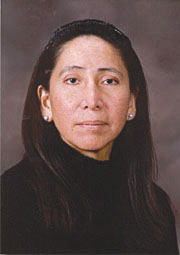
Delphine Red Shirt
We need a shelter for abandoned children on the Pine Ridge Reservation
By Delphine Red Shirt Growing up on the Pine Ridge Reservation the hardest times I remember had nothing to do with poverty or lack, it had everything to do with the loss of culture. That is, culture meaning the Lakota beliefs (and behaviors) that were true for us as a people, all the things that kept us together as families or tiospayes throughout time. In our colonized lives, even the things true for the smaller nuclear families with a mom and dad, where parents took responsibility for their children. These things fell apart, especially when Lakota women abandon their own children. What happened in my family is now commonplace on the reservation. For me, at the age of twelve or so, my mother suddenly was made responsible for four small children, her own grandchildren when their Lakota mother abandoned them and disappeared. That single event changed her life and my life forever. Within a short period of time thereafter, my mother was diagnosed with diabetes and her health deteriorated while she took care of not only the four grandchildren but three of her own including me. Then within a short time, it seemed, as I finished high school and entered into college, another four grandchildren, and two more came into her life. In total she raised ten grandchildren from the time I turned twelve to the time I graduated from college. The single cultural behavior that seemed to have been forgotten was simply this: Lakota women taking responsibility for their own children. This happened three times in my mother’s lifetime. Three different Lakota women, one her youngest daughter, had children that they walked away from. Something I cannot image with my own three children. How helpless young children are. Why do I bring this up at this time when it seems so rampant on the reservation and not as unusual as it was in the time when our language and culture were stronger? I bring it up now, at a time when alcohol will be more prevalent on the reservation. This may be the time that the Oglala Sioux Tribe looks at the children that are abandoned and builds a shelter for them, where they are cared for by the tribe. What some call an orphanage, the tribe can, using resources, maybe from the tribal college, establish early childhood centers where caregivers, students in early education, and elders interested in the well-being of these children can come together in a central place and care for them. I remember my oldest niece, the one born when I was ten, who was later abandoned by her mother at the age of four or five. How beloved she was, how I sat with her in my lap and tried to point out animals and name them in Lakota, how she insisted on English even as a little girl. Today, she understands Lakota but cannot speak it. She was abandoned, along with her brother and two sisters. Looking back, it seemed appropriate that their grandmother take them. But today, I realize that it was too much for a single woman, inamitawa kin he, to assume that enormous responsibility. When I miss my mother who did live a good long life, I think of all the good she tried to do in single-handedly keeping her family together. First by raising her own children and then coping with 10 that were not her own. Where were the Lakota women whose children she tried to raise? Ironically, one ran a children’s program on the reservation for a while and another is now a self-professed guardian of the traditional ways. All of the children that were abandoned in my mother’s care were healthy beautiful children. What was hard to understand is why did those women walk away so easily? Today, alcohol or drugs are blamed, but the need is greater. The agency on the reservation in charge of placing children is overwhelmed. It is harder to place children in safe environments; even with their own relatives. This is the time to think about building a shelter on the reservation for these children. Many of them witness things in homes where alcohol and drugs are prevalent that no child should see. Some of them are left in those precarious situations as families are supposed to be kept together. We all know addiction is addiction whether it is alcohol or drugs; and that addicts are selfish in that they are only interested in the next high for themselves. It used to be that we as a people thought that children should be sheltered, loved and taught well. We need to culturally bring these Lakota practices back and give these Lakota children, in situations where tribal agencies have to get involved, where the tribal police is called in to intervene, we need to assume responsibility and give these children a chance at a better life. We cannot look away, and keep looking away. They cannot speak for themselves. Culturally, we have been taught to look out for the helpless ones. What about the Lakota women that abandon their own children? We see them in our communities today, one sister-in-law whose children my mother raised, is now a firm carrier of the pipe, she claims. What about the scars on the children who needed the mother she refused to be when they were small. I know because I grew up with them. (Delphine Red Shirt can be reached at redshirtphd@gmail.com)
Join the Conversation
